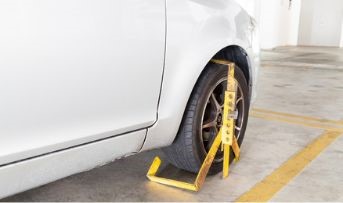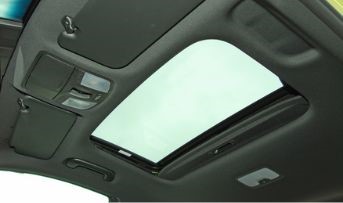General Insurance Blogs, Articles & Updates by - Magma HDI
Have us call you
- RENEW YOUR POLICY
- BUY NEW POLICY

Best tips to lower your health insurance premium
India is home to some of the best healthcare facilities in the world. Be it some government hospitals or super-specialty hospitals, they are equipped with state-of-the-art facilities and highly skilled doctors. However, with the rising costs of treatments and healthcare, buying health insurance is necessary for everyone. Even with all the facilities, timely treatment is often not easily accessible, so people keep turning to premium healthcare.
Super-specialty hospitals promise premium services at the cost of steep expenses, and most people from middle-class backgrounds cannot afford these treatments. This is also the reason why most people invest in health insurance. But, with increased services, the cost of premiums will also significantly rise.
If you want to reduce your health insurance premium without compromising on the services, this article is just for you.
1. Start early:
Since most health insurance plans consider your age and medical history to calculate premiums, starting early can save you a lot of money on premiums. A younger body has a better immune system, and thus the risk of diseases or illness is significantly low. If you are someone who has already been diagnosed with age-related issues such as diabetes, blood pressure, or other heart conditions, then your premium amount will also increase. To ensure that you are getting a policy at the best rates, start early and invest in the best health insurance in India.
2. Online health insurance:
Online health insurance has a lot of benefits, but the most significant of them is how cost-effective it is. With online insurance, you can avoid broker fees and other administrative charges. You also can buy health insurance from anywhere, with the freedom to choose the desired policy by comparing multiple plans.
3. Compare plans online:
There are many health insurance policies in the market and deciding on the one that suits your choices can be overwhelming. But in the long run, having an informed idea of various aspects of your insurance policy will be helpful. You can compare insurance covers, premiums, and add-on costs online. With the internet at your disposal, comparing various insurance companies is a smart way to ensure that your company is not overcharging.
Another great alternative is to use the online insurance calculator. Different companies have a calculator that helps you calculate the overall cost of your insurance. Once you enter all the covers you need, this calculator will give you a rough estimate of your health insurance plan. Compare different prices online to choose the best option for you.
4. Extended validity:
Most insurance plans have a validity of one year. However, some companies provide significant discounts on policy periods of two to three years. Not only you reap the benefits of fantastic deals but getting a policy that extends to three years also helps you evade the annual renewal costs on your policy.
5. Family plans:
Health insurance is mandatory not just for ourselves but also for our families. However, the cost of buying health insurance for every family member can add up to a lot. This is why insurance companies have initiated family health insurance plans. Family plans provide comprehensive coverage to your family members. A family insurance plan is a smart way to cut costs on individual premiums while also maintaining the scope of various covers.
These are a few ways in which you can ensure cost-effective insurance planning. Thorough research on different insurance companies and their policy plans can help you make an informed decision that suits your budget and provide maximum coverage. Remember that health insurance is essential, but what is more important is to take good care of your health. Regular exercise and healthy eating habits are a simple start to leading a healthy and happy life. Invest in the best health insurance in India for your loved ones to safeguard yourself against any expenses you might incur in hospital and medical bills.
Click HERE to buy the best health insurance in India.
Disclaimer: The information provided above is for illustrative purposes only. To get more details, please refer to policy wordings and prospectus before purchasing a policy.

Understand these five car parking rules to avoid traffic violation
Car parking has always been a major challenge in most metro cities. The number of cars on the roads is constantly increasing while the parking space and the available supporting infrastructure have yet to develop at a matching pace.
A traffic challan for violation of parking rules is very pinching and bothering. What do we do if there is not much free legal space available for parking our car? The legitimate answer is understanding the car parking rules to avoid traffic violations.
Let us go through the five car parking rules that one must know.
1. Way of parking:
According to section 122 of the Motor Vehicles Act, 1988, a car owner should always park his car in a manner that does not cause any inconvenience to other road users. Also, the way of parking the car should not be dangerous, nor should it cause any obstruction to other vehicles and users of the road.
If there is a signboard depicting the correct manner of parking your car on the roadside, you should abide by it and park your car accordingly.
2. An abandoned or unattended car:
According to section 127 of the Motor Vehicles Act 1988, you cannot abandon your car or leave it unattended at a public place where you cannot legally park it.
A police officer with jurisdiction in that area can tow your car away or make it immobile by using methods such as clamping the wheels. Also, you or the person in charge of your car will be responsible for paying the towing charges.
3. Prohibited parking:
You cannot park your car in a no-parking zone or any spot where parking is prohibited, on a footpath, on the wrong side of the road, on private property without the owner's permission, alongside a parked vehicle so that you do not obstruct the traffic flow, in front of any gate that blocks the entrance to any place, in front of a school or hospital entrance, near a bus stop, a traffic signal, or a road crossing.
Also, your vehicle should not obstruct the view of a signboard. You are not permitted to park at a bend, at the top of a hill, or even near or on a bridge so that you do not obstruct incoming traffic.
4. Parking restrictions at home / society:
Even your housing societies or homes have car parking rules you must follow. You should park your car so that it does not obstruct or block your neighbour's gate.
It is illegal to park your car at the boundary of your own house if your parking style obstructs the neighbour's gate in any way. He may be unable to open the gate of his house fully. In such a case, he can file a case, serve you a legal notice and obtain an injunction restricting you from blocking his gate.
5. Blocking a parking lot exit:
You cannot park your car in front of another vehicle in a parking lot in such a way that his way is obstructed, and the owner of that vehicle is unable to take his car out. In such a case, he can call a cop, and you will have to pay a fine for blocking his way.
Parking fines differ from one city to another in India. Understanding the parking rules in your respective cities is crucial to avoid traffic violations. So, abide by these parking rules to avoid catching yourself in chaotic situations and save on fines and penalties.
Similarly, having a good car insurance policy will help you save on other penalties, as car insurance is mandatory to drive legally in India. Also, it will provide coverage in case of an accident, a mishap involving your car, or even if it gets stolen. Hence, go for the best car insurance in India and forget the stress of expenses involved in unexpected situations.
Click HERE to buy the best car insurance in India.
Disclaimer: The information provided above is for illustrative purposes only. To get more details, please refer to policy wordings and prospectus before purchasing a policy.

Best tips to detect fraud in your health insurance plan
The time of a health crisis is a vulnerable time for you and your loved ones. And this moment of panic is where most frauds occur, where mischievous minds exploit your vulnerability with their fraudulent strategies. Everyone can't look into the small details of fraud unless they understand how it takes place beforehand.
Medical emergencies are a time of great financial insecurity. A lifetime of savings can be drained due to your loved one getting into a sudden accident or the unexpected detection of chronic disease. In this time of need, health insurance is a great boon. It can provide you and your dear ones with much-needed protection from financial disaster. However, it is imperative to have the correct information to avoid falling into the trap of health insurance fraud. You won't ever want your hard-earned money to go to waste by falling prey to frauds or scams.
This blog gives you some pointers you can keep in mind to safeguard yourself from health insurance frauds.
Most common types of fraud:
Before getting into how to protect yourself from this deceit, here are some of the most common ways people can swindle money from your health insurance policy –
1. Medical identity theft: This type of fraud involves scammers using your personal information to charge fraudulent bills or make health insurance claims in your name.
2. Marketing scams: If you do not do adequate research about the company's reputation and decide to buy insurance, it may result in the company taking a high premium from you but not responding to any claims. These companies give out forged insurance documents to individuals and then become untraceable.
3. Ambulance fraud: Holding the spot of being the most overlooked type of fraud, ambulance fraud comes in the form of unnecessary charges and facilities you might not have taken, paying huge dividends to scammers.
Tips to safeguard yourself from scammers –
1. Take your time: The biggest red flag in an insurance company is when they ask you to make hasty decisions. Avoid schemes that promise you a lesser premium or better claim if you sign immediately. It is advisable to take your time with the decision-making process and be sure what kind of policy is necessary for you.
2. Be wary of unsolicited calls: Reputed insurance companies rarely call individuals to market their health insurance policies; if they do, they never pressure a customer. Be cautious of aggressive salespeople. However, even if the salesperson seems to be from a reputed company, you must never share your personal information or documents without proper research about the company.
3. A hard copy of policy and seller's signature: Request a copy of the policy they offer, complete with the company's seal and seller's signature.
4. Extensive research on plans: Become familiar with the kind of plans that insurance companies usually offer. This will help you be aware of unsolicited advertisements to sell insurance policies. Understand that if something is too good to be true.
5. IRDA licence: If an agent does not have an IRDA licence, there is a higher probability that they are a scammer.
6. Avoid online transactions: It is safer to avoid sending any money online to the agent upfront unless it is an IRDA licenced insurance firm.
Researching a quality health insurance policy is already a demanding process. The process is complicated, from finding a good plan to cover all your needs to looking for a reputed doctor in an emergency that your insurance covers and then claiming the insured amount. This is when people are most susceptible to getting scammed by fraudsters.
Be careful while opting for a health insurance policy, and always remember to read the fine print. Always buy from genuine insurance firms and avoid the manipulative sales tactics of agencies. Rely more on your personal research for buying the best health insurance and guarantee yourself trustworthy and reliable protection.
Click HERE to know more about health insurance.
Disclaimer: The information provided above is for illustrative purposes only. To get more details, please refer to policy wordings and prospectus before purchasing a policy.

Keep your car looking classy with a clean sunroof!
The trend of automobiles that exude luxury isn't on the decline anytime soon. With several unique yet functional features rolled out by top manufacturers to entice drivers, the automobile sector continues to evolve.
Sunroofs are one such feature that has been in the market for long enough but continues to catch the fancy of many automobile owners. While they let in the fresh air and natural light on the go, many owners avoid purchasing cars with sunroofs because they fear excessive maintenance.
If you feel the same, here are some tips to keep your car's sunroof in good condition:
1. Clean it frequently
Dust and debris can easily get lodged inside the sunroof due to its positioning. The component's performance will be compromised if it gathers trash and dust particles beside and within. It is essential to clean the sunroof from top to bottom, including the areas surrounding it. Your car's sunroof will remain spotless and operate smoothly with regular cleaning.
2. Annual deep clean
You should thoroughly clean your car's sunroof once a year with the following:
● Clean the sunroof properly
● Now pump low-pressure air through the drain tubes to clean the trough
● The last step is to insert a thin, flexible, non-puncturing wire into a drain tube, twist it anticlockwise, clockwise again, and gently push it farther into the line.
3. Use appropriate cleaning products
Never use any cleaning agent or solution to clean the sunroof. You can harm the quality of the rubber seal in the sunroof by using a harsh or improper cleaning agent. The best advice from professionals for cleaning a sunroof is to use warm tap water or isopropyl alcohol (IPA). 4. Set it free to move
Inspect the working parts of your car's sunroof if it sticks or seems to be moving slowly to look for cracked or stripped gears or a build-up of dirt and debris. To find the location of the issue, start your car and cycle the roof between the open, closed, and vent positions. After a few cycles, clean everything if it works more smoothly, and lightly lubricate all visible moving components with a mild, heat-resistant grease. If you hear a squeaking noise or see the sunroof not opening and closing correctly, visit an expert mechanic to rectify the problem.
5. Look for rust around the hinges
You should check the mounting hardware for any signs of rust or wear and tear if the sunroof in your automobile is manually operated. Moisture can also cause it to corrode. The hardware won't rust or sustain any damage if it is properly maintained. You should pay close attention to the mounting hardware and clean it properly when cleaning the sunroof.
6. Lubricate the moving parts
Lubrication is necessary for a sunroof's moving parts to operate effectively. But, using the proper grease is crucial to ensure efficient and trouble-free operation. Conventional mineral grease is inappropriate for lubricating components in a sunroof. For this, you must use heat-resistant grease. This grease is designed for high temperatures.
7. Pay close attention to any unusual sounds
Remember to listen for any odd noises from your sunroof while opening and closing it. When opened and closed, you must adequately clean the sunroof if it makes a scraping noise. The sunroof auto glass is likely to shatter if there is a popping sound. Consequently, before the issue worsens, it is critical to seek professional assistance.
The correct operation of a sunroof depends on regular maintenance. Your sunroof can get damaged due to improper care. Take your car to a service centre that fixes auto glass if the sunroof makes odd noises even after proper maintenance. While we are discussing your car's upkeep, it is also crucial to buy car insurance. Reliable car insurance can protect your asset from mishaps and monetary stress.
Click HERE to buy the best car insurance in India.
Disclaimer: The information provided above is for illustrative purposes only. To get more details, please refer to policy wordings and prospectus before purchasing a policy.


